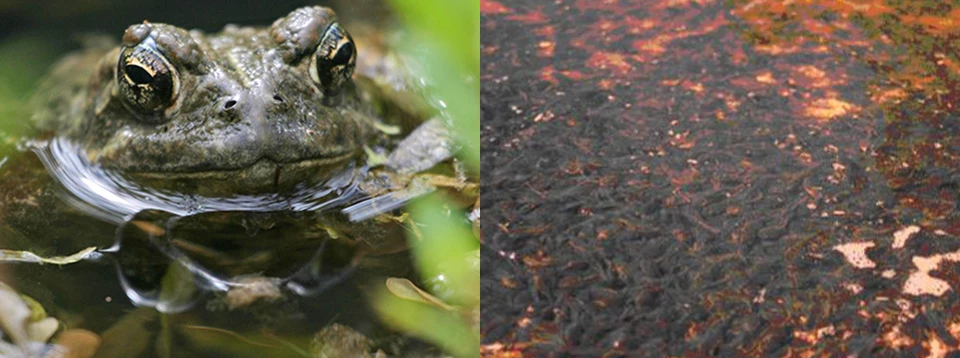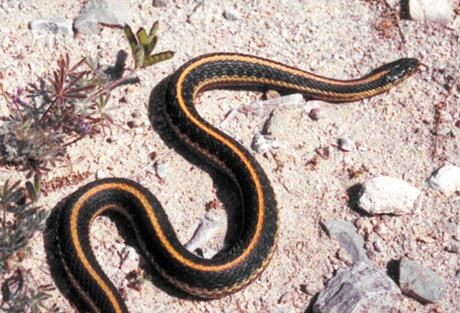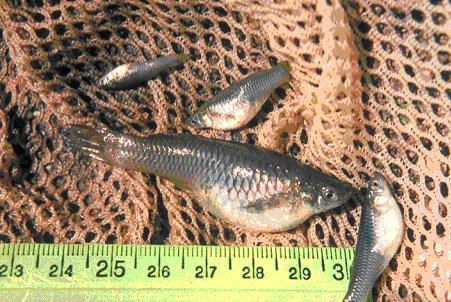Last updated: May 7, 2018
Article
Inventory of Riparian Areas at Pinnacles National Park

NPS
The Question
What species are supported by the streams and ponds at Pinnacles National Park?
Pinnacles National Park is located within the Salinas River Watershed and is very popular with climbers and hikers. The park is an area of steep terrain at the end of the Gabilan Range, and is named for its beautiful rocky peaks, known as pinnacles. Several habitat types are represented at Pinnacles; the dominant vegetation type is chaparral and there are also grasslands, oak woodlands, and some riparian habitat, including streams and ponds.
Although riparian areas do not represent a large proportion of the park, they are extremely important to the species that live within and around them. The most developed areas in the park lie within the riparian zones, jeopardizing the health of these key habitats. In addition, the headwaters of Pinnacles' streams are located outside of the park, and are consequently subject to contamination before ever reaching the park.

NPS
The Project
Inventory vertebrate and invertebrate species that are permanent and intermittent within all riparian areas.
An inventory of the species that occur in the riparian areas of Pinnacles National Park was conducted in 2001- 2004. Surveyors conducted visual counts of all vertebrate species within 1 m of a riparian area. GPS locations were marked for red-legged frogs and Southern Pacific pond turtles. Aquatic invertebrates were sampled using a variety of methods, including dipnets, forceps, aspirators, kicknets, aerial nets, and blacklight traps. These devices captured invertebrates in the water, on the banks, and flying in the air. Collected specimens were identified by eleven different specialists.

NPS
The Results
A completed inventory revealed a moderate change to the vertebrate species composition since the last inventory and included some other interesting findings.
Nearly 250 species of aquatic invertebrates were documented, including 38 dragonflies and damselflies. The inventory for the invertebrates is likely less than 50% complete, which is not uncommon for these types of inventories. Such small creatures are hard to find. However, the researchers listed suggestions for improving the completeness of future inventories and how to amplify awareness of possible future invasive species.
Points of Interest
- Although the vertebrate species composition appeared not to have changed within the last forty years of the park's history, some invasives have been eradicated and the federally threatened red-legged frog has declined. However, the red-legged frog has recently been re-established at the Bear Gulch Reservoir and has begun breeding there.
- Two groups, the Eremidrilus worms and Hydropsyche caddisflies, showed unusually high diversity. Investigating how these closely related species can coexist in such a small area is an intriguing avenue for further research which may shed light on the complexities of stream habitats at Pinnacles.
- The Pinnacles riffle beetle, endemic to Pinnacles and surrounding areas, was found to be more widespread within the park than was previously thought. However, it may be vulnerable to water pollution and disturbances to natural stream processes emanating from developed areas within and outside the Park.
- Re-introduction is planned for the foothill yellow-legged frog. Hopefully this restoration effort will help the populations of the Diablo Range garter snake, which feeds on the frogs, and the two- striped garter snake, which often co-occurs with the frogs.
Additional Resources
Contact Information
Links
Riparian Habitat Monitoring at Pinnacles National Park
San Francisco Bay Area Inventory & Monitoring Network
Pacific Coast Science & Learning Center
Wildlife of Pinnacles - Checklists and information on fish, amphibians, reptiles, dragonflies, and damselflies.
San Francisco Bay Area Network Species Lists - Certified Species lists including residency, abundance, and native/non-native status.
Summary by the Pacific Coast Science & Learning Center, December 2006.
Download PDF from the NPS Data Store
